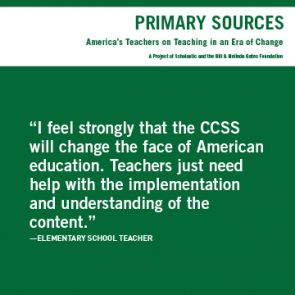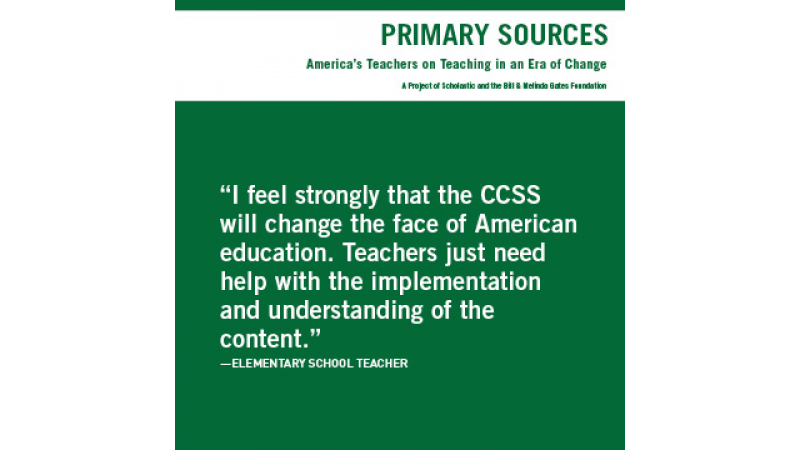 How are the Common Core State Standards affecting teachers’ students and classrooms?
How are the Common Core State Standards affecting teachers’ students and classrooms?
Acknowledging the scope of change happening in classrooms across the country, we sought to answer this question by checking in with the teachers who participated in the 2013 study Primary Sources: America’s Teachers on Teaching in an Era of Change, a comprehensive report sharing the views of more than 20,000 teachers.
The 2014 Primary Sources Update reflects the voices of more than 1,600 of America’s pre-K–12 public school teachers in Common Core implementation states. It reveals that many teachers have remained optimistic that the new standards will lead to greater levels of student achievement and many teachers are observing positive changes in their classrooms. We do see that it is also challenging and nuanced work.
So what are public school teachers saying about the new standards? Take a look:
- In 2014, 65% of teachers say that implementation is mostly or fully complete and more teachers feel prepared to teach the Common Core (79% in 2014 vs. 71% in 2013). One elementary school teacher said, “I feel that within my district, efforts are being made to help teachers understand and implement the Common Core State Standards, and I feel comfortable and enjoy learning about new ways to do things.”
- More teachers agree implementation is going well in their schools (68% in 2014 vs. 62% in 2013) while teachers also increasingly acknowledge it is challenging (81% in 2014 vs. 73% in 2013). “I feel strongly that the Common Core will change the face of American education. Teachers just need help with the implementation and understanding of the content,” noted an elementary school teacher.
- Teachers continue to need support and resources, identifying Common Core–aligned instructional materials (86%) and quality professional development (84%) as critical to ensure successful implementation. One high school teacher explained, “Teachers have a wide variety of needs in their classroom with limited resources to address the kids and their needs. I want better professional development that will help me be a better teacher in my changing classroom and school.”
Visit www.scholastic.com/primarysources to read the full 2014 Primary Sources Update report and explore the data in-depth. To join the conversation on Twitter, use #TeacherVoices.



